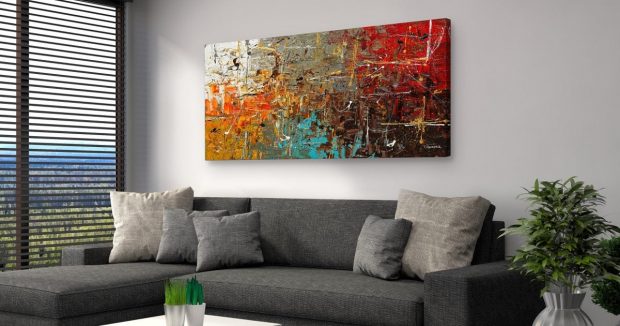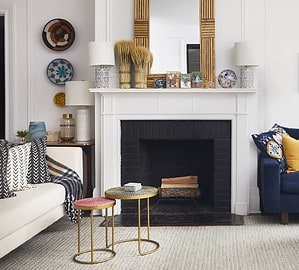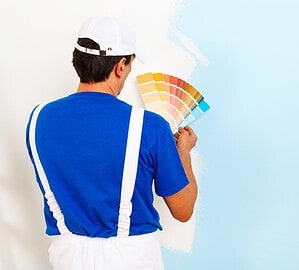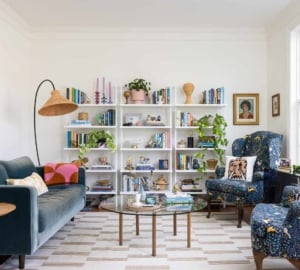Wall art prints, hangings and photos are the perfect finishing touches to bring your home together.
Although it may appear to be a challenging task, locating, purchasing, and installing art pieces that you adore is well worth the effort. And while there are no hard and fast rules for decorating your home, following these basic guidelines will help you choose the perfect wall art pieces for your home in all of its individuality.
Shop by size, style, colour, theme, inspiration, or floor plan – the possibilities are endless.

No.1 Tip When Choosing Wall Art:
Before we get into the specifics, here’s one piece of advice that should serve you well throughout your search: find something you enjoy. It’s that easy!
Art should elicit a reaction (hopefully a positive one!), so choose something that evokes feelings of happiness, excitement, calm, or joy. If not, don’t hang it on your wall.
While it’s common to make compromises when choosing art – perhaps because finding the perfect piece has proven difficult or because it’s easier to grab the first painting that reflects the room’s colours in question, this shouldn’t be the case. Consider your walls to extend your style, and approach the selection process like you would a new sofa, dining table, or bed. Find a piece of wall art that has the power to transform a space in your home.
Choosing Wall Art By Size:
Now for the meat of the matter. When choosing wall art, one thing to have in mind is the size of both the piece and the empty wall or space you have available. It’s just waiting for a lovely photo, print, or painting, but not if the sizes are off and throw the room’s balance off.
Enter your search with a size in mind; this will allow you to filter through options quickly. It’s also essential to think about placement before you buy, as it will influence the size you’re looking for. Where will this go? Will it be hung directly on the wall? Or will it be placed on top of a surface like a desk?
Size is still an essential consideration if you want to decorate an entire room with multiple art pieces. Begin with the largest and work your way down to the smallest, filling in any gaps that appear as your room develops. For example, if you want a large statement piece of art above your sofa, start with that because it will be the first thing people see. As you begin to put your space together, the smaller supporting pieces you choose will quickly add up, and before you know it, your home will be decorated with designs you adore.
Here are a few standard artwork sizes you should consider that can help you better understand scale:
Oversized art pieces are 1 metre or longer and serve as the focal point of a room. They look fantastic when placed above a large piece of furniture, such as a couch, bed, or dining table.
Large: With a frame length of 80 to 100 centimetres, large wall art pieces make fantastic surface centrepieces or act as the focal point of a busy gallery wall.
Medium: Medium-sized wall art measures 60 to 80 centimetres in length and is the most versatile. Add two to a gallery wall, or let a single piece speak for itself as a stand-alone in a low-key space.
Small frames typically measure between 45 to 60 centimetres long and are ideal for grouping together in a gallery wall style! For a dynamic effect, combine two to six small wall art pieces.
Mini: Finally, the group’s baby – mini frames! Mini prints, which range in length from 25 to 45 centimetres, look best when grouped.
Finally, we’ll leave you with a few key pieces of advice to keep in mind throughout your search for those looking by size.
- Keep it in proportion – pictures should be no longer than two-thirds the length of your sofa.
- Height is essential; keep wall art at least 15 centimetres above the edge of your furniture.
- When arranging your art, keep in mind the height of your ceiling and the room’s proportions.
- Make it a collaborative effort by grouping small pieces of art rather than filling a large space with a mini print. Works of the same colour scheme or from the same artist will complement one another nicely.
- When in doubt, buy-in threes – triptychs and wall art sets are popular for a reason, so if you’re under time constraints, why not grab multiple pieces at once? These are not only intended for specific placements that make good use of space, but they also look extremely effective and stylish.
Choosing Wall Art By Style:
If size isn’t your thing, how about the most important factor in most interior design decisions? Style!
Your home most likely already has an established style and point of view, so consider this and how your new purchase will fit into your space when selecting wall art.
Whether it’s modern, traditional, coastal chic, or simple Scandi, the wall art you choose can cement and refine the style of your home, so choose wisely! There’s something for everyone, from abstract prints to calming nature photography to minimalist, neutral paintings.
Here are a few of our best tips for matching your style and wall art selections.
Consider the mood your home evokes (or the mood you want it to evoke) and look for art that reflects that. Do you want to feel as if you’re on a beach when you’re actually in the middle of a busy, stressful city? Most likely, your design choices make you feel relaxed rather than energetic. This should be reflected in your artwork to tie everything together.
Allow style to influence the type of art you select. Modern homes can benefit significantly from black and white photography, whereas a coastal cottage may benefit more from a textured painting in beachy tones.
When all else fails, framing will be your best tool. If you choose a piece that feels a little off, perhaps reframing it will change your mind. After all, a sleek, silver frame will look out of place in a Scandi home; instead, opt for a softer, lighter wood option to create harmony in the space.
Don’t put your size on hold. It’s just as important. Think about the scale of the piece you’re choosing and its overall style.
Choosing Wall Art By Colour:
Another popular strategy for choosing wall art is to look for pieces that complement your home’s existing colour schemes. This does not mean minimalist or neutral designs. Fans of them must reflect those exact vibes in every piece of art they buy; it’s a good starting point for finding something you love that will fit perfectly into a space.
There are two major approaches to choosing wall art by colour, the first of which is to use accent hues. Choose a colour or two already present in the room and let that guide your choice of art. This results in inconsistency and, as a result, a cohesive, sophisticated, and modern result. Experiment with different shades and tones of these colours to add depth without deviating too far from your existing colour palette.
For example, if your home is primarily neutral with some darker terracotta colours, focus on this and experiment with it in various forms – bright, dark, light, and so on. If you already have a focal point in the room, consider incorporating it into your wall art. If your living room has an olive green sofa, olive green hints in a painting are the perfect combo.
The other approach to choosing art by colour is bold but within reason. Select the most dominant and visible colour in the room and translate it to your wall art with varying tones and shades or with complementary colours on the colour wheel. Wall art is one of the few places where you can genuinely use bold, bright colours, so take advantage of it as long as it all ties back to your current aesthetic. It’s difficult to fail here if you keep the undertones in mind.
Don’t forget to incorporate a new colour into the room through various items. If you’d like to add a bold new colour to your room, make sure it’s ‘grounded’ in the space with two or three other items in that colour. Colour repetition creates an impact and a specific theme.
Choosing Wall Art By Theme:
We’ve all heard of interior design styles and have probably chosen one that best suits our home. However, because they establish a distinct theme, these also play a role in almost every interior decision you make, including choosing your wall art. The theme of your home determines which pieces fit and stick out like a sore thumb, so it’s possibly the most important factor to consider when purchasing a new piece.
You cannot go wrong if you source and select your new art pieces based on the theme of your home or room. Each style has its influences and manifests in different furniture and homewares pieces, so chances are you can think of a few art choices that indicate this when you think of your home’s style.
A coastal, beachy home, for example, will not suit contemporary, bright artwork, but instead, it would be better to use light, neutral, or whitewashed elements with touches of cooler hues like blue and green. Although you don’t have to go as far as driftwood and seashell photos, your wall art should showcase the look and feel you’ve established as part of your coastal theme. There are possibilities for whites, creams, and beige with lots of texture, beachy photography, and sanded-back white frames.
None of this, however, would work in a mid-century modern home. Mid-century modern homes, with their bolder colours, dark wood, and distinctive shapes, evoke a completely different feeling and, as a result, require a different approach to the artwork selection process. To bring the room together in the best way, use vintage posters, pops of red, blue, and green, and playful geometry.
Choosing Wall Art By Open Floor Plan:
With more and more homeowners buying or designing open floor plans, choosing wall art is more difficult than ever. A golden rule for those working with an open floor plan is buying and hanging art to define your space clearly. After all, one of the drawbacks of an open floor plan is that there is little distinction between rooms, creating a functional and stylistic challenge.
You’ll want your artwork to be consistent throughout, so go into the purchasing process with a theme or colour scheme in mind. Too much variation will result in a clash from various angles in the home and will do nothing to give your home that cohesive, clean look we all desire. Consider space and use it to your advantage – gallery walls are a great option here because they concentrate the art in one place without taking up valuable wall space.



